On the internet I find a lot of tutorials on how to flash a firmware on a Gotek drive.
Most of them are using a rs232 to USB dongle.
I think this is to complicated.
On this page I will describe an other way to flash the firmware.
It’s inspired on some videos I found on youtube.
But first, flashing is done on own responsibility, I’m not responsible for any damage.
What do we need ?
- DfuSe software from www.st.com
- any firmware as DFU file (E.G. an unpacked firmware from FlashFloppy)
- 2 test clips
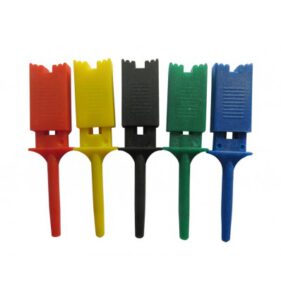
- USB-A to USB-A cable
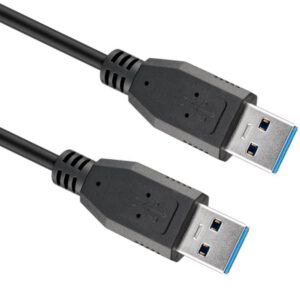
First install the DfuSe application from www.st.com (you may need to register on the site to download).
then we need to wire the Gotek, so the processor gets power and is set to DFU mode.
This is done by wiring some pins near the power connector (don’t power the drive through this connector, it will be powered by USB).
I use 2 testclips to short them, instead of soldering a wire. this way I don’t have to disassemble the drive.
Connect “Boot Jumper to the 3V and TX to 5V.
Make sure you don’t short to other pads.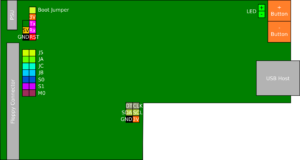
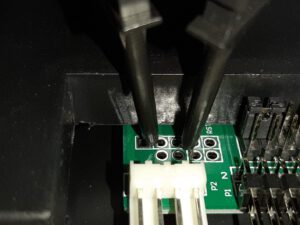
After this, we hook up the drive with the USB-A to USB-A cable to the 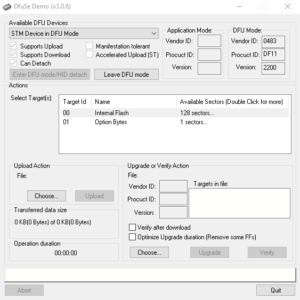 computer and start the DfuSe application.
computer and start the DfuSe application.
In the application you should see a DFU Device in the Available DFU Devices and some Targets (if not, make sure you install the DFU device drivers, supplied with the DfuSe software).
now select the internal Flash and click the “Choose…” button in the Upgrade or Verify Action part of the window.
Browse to the DFU file, click open.
Now click “Upgrade”.
This will start the Flashing of the Gotek, but if this is the first time, you will see two warning popups, on both click “Yes”. 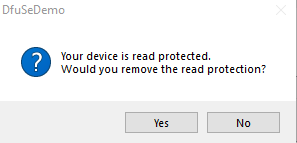
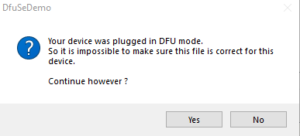
When the bar is completely green, disconnect the USB cable.
Then unhook the test clips.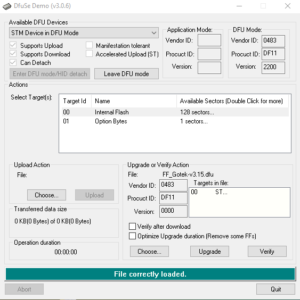
Flashing is done.
When you flashed the FlashFloppy firmware, you can test the drive without building it into a system, just reconnect the USB (without the test hooks connected) and the display should display a number (first digit of the firmware revision).
P.S. if you’re going to use it for your Amiga, don’t forget to jumper S0 instead of S1